- Home
- James Grady
The Short Takes
The Short Takes Read online
CONDOR
The Short Takes
James Grady
for Robert Redford
Contents
Introduction: Our Condor Sky
condor.net
Caged Daze of the Condor
Jasmine Daze of the Condor
Next Day of the Condor
Condor in the Stacks
Russian Roulette of the Condor
Acknowledgments
About the Author
Introduction:
Our Condor Sky
In 1975, generals in the KGB—the Soviet Union’s chief spy agency—got their Russian hands on a new Robert Redford movie: Three Days of the Condor.
In that movie—produced by Dino DeLaurentiis, directed by Sidney Pollack, also starring Faye Dunaway, Cliff Robertson, Max Von Sydow, and Tina Chen—screenwriters Lorezno Semple Jr. and David Rayfiel adapted a slim first novel by a twenty-four-year-old unknown dreamer into a ticking-clock masterpiece propelled by Redford’s character, a bookish intelligence analyst who comes back from lunch to the New York office for his obscure secret CIA research department and finds his coworkers murdered.
Redford’s CIA codename was Condor.
As Redford/Condor insists to the Faye Dunaway character he kidnaps:
“Listen, I work for the CIA. I’m not a spy. I just read books. We read everything published in the world, and we … we feed the plots—dirty tricks, codes—into a computer, and the computer checks against actual CIA plans and operations. I look for leaks, I look for new ideas. We read adventures and novels and journals … I … I … Who’d invent a job like that?”
In 2008, Pulitzer Prize–nominated Pete Earley revealed that the movie stunned Russia’s KGB generals and convinced them they had fallen behind their CIA foes in a critical espionage endeavor: the work they saw Redford/Condor doing.
So the KGB created their own top-secret unit inspired by Condor.
Like in the movie and novel, the KGB headquartered their new secret division in a quiet neighborhood—Flotskaya Street in Moscow—and stuck a phony brass plaque by its front door proclaiming that place to be the “All-Union Scientific Research Institute of Systems Analysis”—a nonsense name instead of the real title of the “Scientific Research Institute of Intelligence Problems of the First Chief Directorate of the KGB”—known by its Russian initials of NIIRP.
Both the movie and the novel projected Condor’s secret department as a small bureaucratic entity with fewer employees than the fingers of your two hands.
The KGB’s Condor-inspired NIIRP employed 2,000 Soviet citizens.
Picture a snow-dusted night in January 2008, inside Washington, DC’s Beltway.
Our dog Jack and not-quite-sixty me are shuffling downhill, back toward my middle class, two-kids-launched suburban home and author’s lair, when through the darkness, I hear my wife, Bonnie Goldstein, shouting: “You’ve got a phone call!”
That call came from Jeff Stein, a former Vietnam War undercover spy, then a journalist for Congressional Quarterly covering espionage. Jeff had Earley’s book and barely contained his excitement as he interviewed me about Condor and the KGB.
I was blown away.
As crime author Mark Terry noted in his 2010 essay about Six Days of the Condor for Thrillers: 100 Must Reads, master novelist John Le Carré says: “If you write one book that, for whatever reason, becomes iconic, it’s an extraordinary blessing.”
Call me blessed.
And come with me to that lucky blessing’s beginning in Washington’s blustery January of 1971, long before my Condor soared in a now—so far—forty-four years’ flight that’s become three novels, a handful of novellas and short stories, a globally famous movie, a TV series—and a template for a fundamentalist assassin and Russian spies.
In 1971, I was a senior at the University of Montana, a Congressional Journalism Intern, one of twenty Woodstock (generation) warriors brought from America’s colleges to Washington to work on Congressional staffs and be night-schooled by a scrappy genre of journalists called investigative reporters. I lived on A Street, Southeast, six blocks from the white icing Capitol Dome in a rented third-floor garret.
Every weekday, I brushed my recently barbered hair, put on my only suit, struggled into a boxy tan overcoat, and walked through winter residential streets to my internship on the staff of a United States senator.
And every workday, I walked past a white stucco townhouse set back from the corner of A and Fourth Street, Southeast. A short, black-iron fence marked the border between the public sidewalk and that building’s domain. Shades obscured the windows. A bronze plaque by the solid black door proclaimed the building as the headquarters of the American Historical Association.
But I never saw anyone go in or out of that building.
Fiction creates alternative realities.
And most fiction is born from a what-if question.
Two history-altering what-if questions hit me as I walked past that townhouse:
What if it’s a CIA front?
What if I came back to work from lunch and everybody in my office was dead?
Logical questions considering those times.
The Cold War ruled. Kim Philby haunted Britain while ghosts of JFK, RFK, MLK, and Lee Harvey Oswald made America tremble. Dr. Strangelove caressed Doomsday weapons. The Soviet Union sprawled as an evil Gulag wasteland behind an Iron Curtain, while Communist China coiled like an invisible dragon behind a Bamboo Wall. J. Edgar Hoover’s FBI knew everything about everybody. Israeli avengers stalked the globe: they got Eichmann, they could get anybody. Apartheid bedeviled South Africa. South American drug dealers were still “small-time,” but America’s Mafia had a French connection for heroin. “Terrorists” were often called “revolutionaries,” whether they wore KKK robes, counterfeit Black Panther berets, the PLO’s kufiah, or the Weather Underground long hair and love beads stolen from the rainbow daze of the Sixties. Cults like the murderous Manson family stalked our streets. Something enshrouding and protecting our globe called the ozone layer was in jeopardy because of deodorant we sprayed in our armpits. Not far from my rented garret, President Nixon’s White House henchmen were formalizing “dirty tricks” into thuggish crews called “plumbers” created for truth suppression, burglaries, and murder. In Vietnam, my generation was in that war’s twelfth year of Americans killing and dying.
Only the ignorant weren’t paranoid.
My what-if fantasy about a covert CIA office on Capitol Hill had a visible counterpart. A flat-faced, masked-windowed, gray concrete building with an always-lowered garage door and an unlabeled slab of gray wood entrance crouched on Pennsylvania Avenue amidst restaurants, bookstores, and bars just three blocks from the Capitol Dome. Hill staffers shared the common knowledge “secret” that the building belonged to the FBI, one of their “translation centers.”
Sure, but what do they really do?
Within pistol range of that secretive FBI fortress sat the townhouse headquarters for Liberty Lobby, an ultra-right-wing political sect that in coming years would with impunity advertise and sell illegal drugs through the mail—Laetrile, a compound its salesmen claim cures cancer that the great actor Steve McQueen decamped to Mexico to use in the days before cancer killed him.
The last lecturer to my class of interns was Les Whitten, a novelist, translator of French poetry, and partner to Jack Anderson, whose syndicated investigative reporting column ran in almost a thousand newspapers. Unbeknownst to them, Jack and Les were under surveillance by the CIA. Les was the epitome of a muckraker—a term of honor.
I stayed after class that night in a Congressional offi
ce to persuade Les to tell me the “great story” about the CIA he’d told the class he would break the next week.
Allen Ginsberg is the Beat poet. He’d seen the best minds of his generation destroyed by madness, dragging themselves through America’s streets is search of an angry fix. The horrors of heroin screamed too loudly for the man inside the poet to ignore. Cherubic, bald, bearded, homosexual, Om-chanting Ginsberg, hated by conservative cheerleaders of “law and order,” did what his critics didn’t dare: he declared a personal war on heroin. Les’s “great story” concerned Ginsberg’s investigations into the CIA’s allies in our Southeast Asian war and their ties to the heroin business.
As Les stood in the nighttime halls of a Congressional office building and whispered his news to me, the world trembled.
But I was just a college kid headed back to my hometown of Shelby, Montana, sixty miles east of the Rocky Mountains, thirty miles south of Canada, and a million miles from “real world” places like New York and London.
My grandfather had been a cowboy and card shark for saloons, my grandmother was a polio-crippled midwife who’d seen eight of her own children survive, including my mother and her four sisters who all lived in our hometown and who helped raise me like a pack of fun-loving coyotes. My Sicilian uncle had a still-unclear-to-me management role in our local red stucco two-story brothel that was protected by the cops and county health officials, a … confusing civic attitude toward law and morality that also manifested in our frontier doctor/former mayor performing often tragically botched illegal abortions in his office above Main Street, a reality that, judging from his steady stream of out-of-town patients, everyone west of the Mississippi River knew.
You know the kid I was.
Coke-bottle-thick eyeglasses. Off in the clouds. The son of loving, respectable middle class parents who did their best. My workaholic father managed movie theaters, which meant I grew up seeing thousands of Grade B movies. My mother was a county librarian, which meant I didn’t need to worry about how long I kept the thousands of crime and adventure novels I devoured. I’d worked since grade school: theater ticket taker, motion picture projectionist, janitor, hay bale bucker, rock picker, tractor jockey, gravedigger. I put myself through my state university shoveling for the city road crew.
When I went to the University of Montana, I was so naïve I thought that the Journalism Department included my passion: writing fiction.
I’d started spinning fictional tales before I could write, dictating stories to my patient mother (she threw them away). By my high school graduation, I’d written my senior class play and had dozens of short stories rejected by magazines. I was seven weeks into my university studies before I realized that the Journalism major I’d chosen did not cover fiction. But the J School gave me scholarships the fiction writing department couldn’t—though that department did have novelist professors James Lee Burke and James Crumley, plus poet Richard Hugo, the only one of that illustrious American literary trio whose classes I took. Yeah, dumb me. My journalism major trained me in tight prose, let me review movies for the student newspaper—coolest gig ever for a cinema and writing nut. I got to cover the times a’changing in the streets. And staying in journalism landed me the gig in Washington.
When I came back from my DC internship, I had no idea how to make my dreams work. All I wanted to do—well, not all—was write fiction. In the autumn of 1971, I began an “independent undergraduate studies” fifth year to give me what I thought was a necessary academic umbrella to write fiction …
… only to be saved—dazzled, actually—by another dose of great luck.
Montana was re-writing its outdated, robber-baron-bred state constitution—Dashiell Hammett created noir fiction with Red Harvest, his debut novel of crime and corruption set in the old constitution’s Montana. The staff of the new constitutional effort needed an emergency replacement who could write fast and had a résumé involving government (say, interning for a US senator). They picked me.
After the convention, spring of 1972, I disappeared on the road for a few months, came back to Helena, Montana, and after a brief foray as a laborer/fire hydrant inspector, took a feed-me job in government bureaucracy.
The rage to write burned in me like a heroin addiction welded to sex.
I’d decided that the only way to learn how to write a novel … was to write a novel.
And that the only way to be a writer … was to write.
I lived in a second-story apartment above a cottage not far from the state capitol building in Helena. For a while, my roommate was Rick Applegate, one of America’s smartest Baby Boomers. Often, I stole my fictional characters’ names from the spines of Rick’s nonfiction books (Condor’s Heidegger). Our neighbors were a so cool couple: he was an affable whip-smart lawyer, she was that tawny-haired artsy woman so many of us Sixties soldiers wanted to be or wed. I lived in that apartment long enough to meet their first born, a baby girl named Maile Meloy who grew up to be a major American author, but I moved out of town before they brought home their second child, a son Colin Meloy, leader and chief writer for the famous twenty-first-century indie-folkrock band The Decemberists. I labored in a bureaucracy, jogged and studied judo, saw my girlfriend when I could, soared in AM radio rock ’n’ roll, read hundreds of novels, went to movies, saved my pennies, and spent hours at the kitchen table hunkered over a battered green manual typewriter.
And felt two what-if questions from my Washington, DC, days come to life.
In those days, James Bond, super spy, dominated espionage fiction. Despite fine movies having been made from their excellent books, John Le Carré and Len Deighton were overshadowed by 007. Eric Ambler, Josef Conrad, and Graham Greene could be found on library shelves, but at bookstores, they were blanked out by the glitz of Dr. No, Goldfinger, and From Russia With Love (the best Bonds)—Sean Connery and Ursula Andress, sex and a Walther PPK.
As much as I love “Bond, James Bond,” I didn’t want to write about a superhero. I wanted my imaginary hero to feel real, even though he worked for the CIA.
The Central Intelligence Agency, America’s best-known spy shop. In that fearful post–Joe McCarthy era, when assassinated JFK had publicly loved James Bond and secretly been entangled in covert intrigues like assassination plots against Cuba’s Fidel Castro outsourced to the Mafia by our spies, the CIA was invisible.
When I researched Condor, I found only three credible books on the CIA, two by David Wise and Thomas Ross (The Invisible Government and The Espionage Establishment) and one by Andrew Tully (CIA: The Inside Story). I stumbled across a book by historian Alfred W. McCoy, who braved the wrath of the US government, French intelligence agencies, the Mafia, the Union Corse (the major French criminal syndicate), the Chinese Triads, and our exiled Kuomitang Chinese allies to write The Politics of Heroin in Southeast Asia. McCoy tramped the mountains of Laos, air-conditioned government corridors of Saigon (now Ho Chi Minh City), and along the klongs of Bangkok to show how, in our crusade against communism, America’s government had in the least embraced ignorance about the gangsterism of those we called our allies. Allen Ginsberg redeemed.
Those works plus a few columns by muckraker Jack Anderson constituted the only “reporting” I did on the CIA.
My imagination was thus unencumbered by much reality.
Prose fiction in that era treated the CIA like a phantom. CIA agents made appearances in hundreds of novels, but they were inscrutable.
Three notable exceptions were Richard Condon, whose Manchurian Candidate military intelligence nightmare blew me away in adolescence as both a novel and a movie; a cynical novel by Noel Behn and its John Huston–directed movie The Kremlin Letter (“off the books” spy groups, not the CIA); and great novels by Charles McCarry, who worked as a deep cover CIA operative.
Another CIA agent named Victor Marchetti—who post-Condor 1974 coauthored The CIA and the Cult of Intelligence, an exposé censored
word-by-word—first wrote a 1971 novel that followed a then-common practice: he changed the name of the CIA, further distancing fiction from reality.
Hollywood treated the CIA with a Tinkerbell touch: the CIA meant fancy gadgets, trenchcoated knights in righteous pursuit of truth, justice, and the American way.
An engrossing exception that few people saw was the 1972 movie Scorpio, starring Burt Lancaster as a CIA executive who may or may not deserve the French assassin the Agency forces to hunt him. During its Washington filming, the cast for that movie stayed in the same hotel that Nixon’s Plumbers used as a base of operations to burgle the Watergate complex across the street. Nixon burglar and former CIA agent E. Howard Hunt even spy-trick “coincidentally” rode the elevator with the movie’s co-star Alain Delon and tried to impress the actor by speaking French.
I was a fan of my high school days TV show I Spy starring Bill Cosby and Robert Culp, but TV in the Sixties broadcast in the shackles of censorious “standards,” and those two American agents too often came off like super spies. Over-the-top “spy” TV shows like Mission: Impossible, The Avengers, and The Man from Uncle were addictively entertaining, but TV’s most realistic “spy show” was the Patrick McGoohan drama called Secret Agent in the US (with a great Johnny Rivers rock ’n’ roll theme song) and Danger Man in Britain.
Of course, there was Alfred Hitchcock. The King. His movies often unfolded in worlds of espionage and international intrigue. But for Hitchcock, spies were merely agents of the MacGuffin—that force that throws often-innocent characters together, the “what it’s about” for suspense and action.
For my novel, I “invented” a CIA job I’d love if I couldn’t be a writer: reading novels for espionage hints.
After my experiences in the US Senate, working on Montana road crews, and for a federally funded state office, I decided that even a secret agency was still a government bureaucracy powered by the same forces and foibles I witnessed every day.

 The Short Takes
The Short Takes Montana Noir
Montana Noir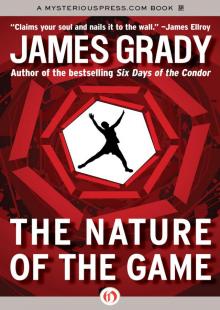 Nature of the Game
Nature of the Game Condor in the Stacks
Condor in the Stacks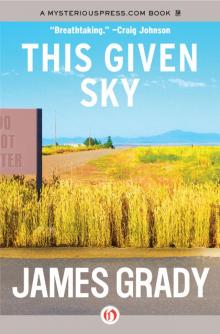 This Given Sky
This Given Sky Three Days of the Condor
Three Days of the Condor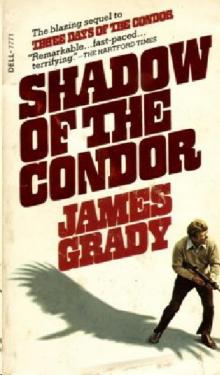 Shadow of the Condor
Shadow of the Condor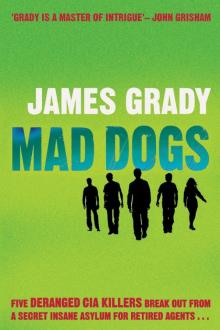 Mad Dogs
Mad Dogs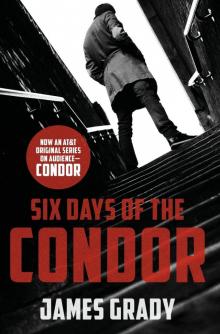 Six Days of the Condor
Six Days of the Condor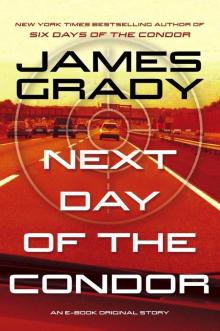 Next Day of the Condor
Next Day of the Condor